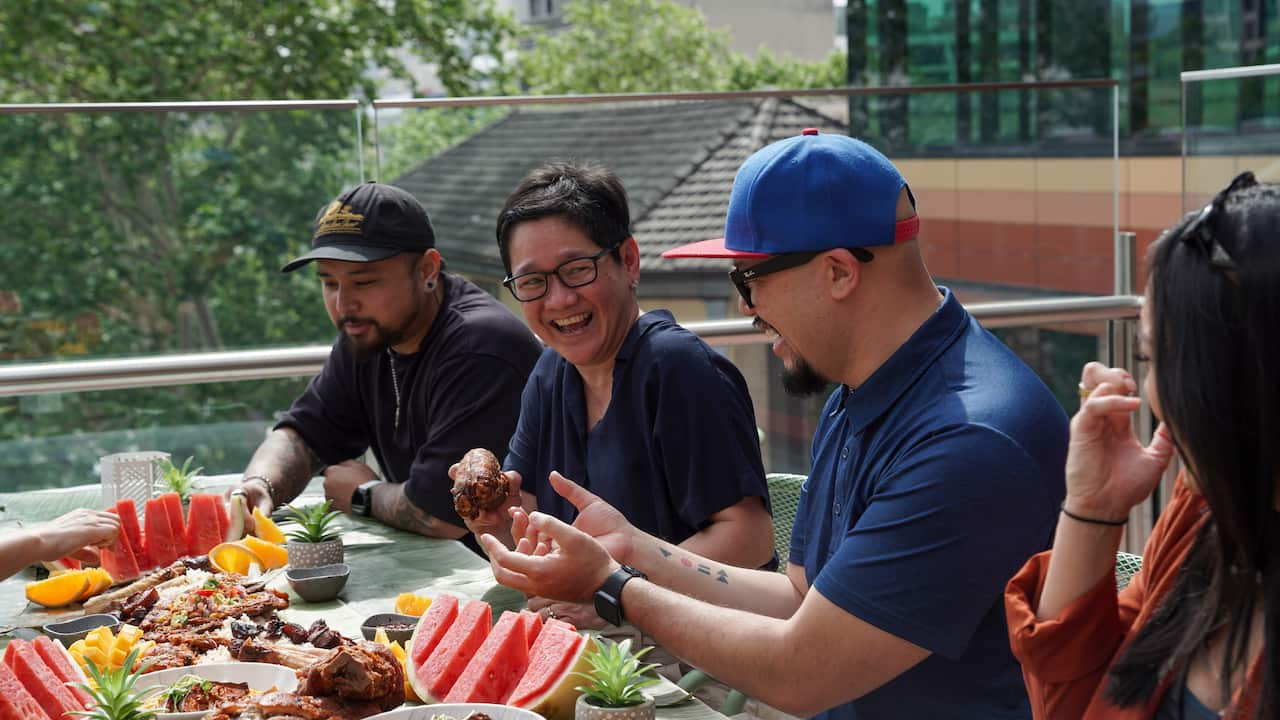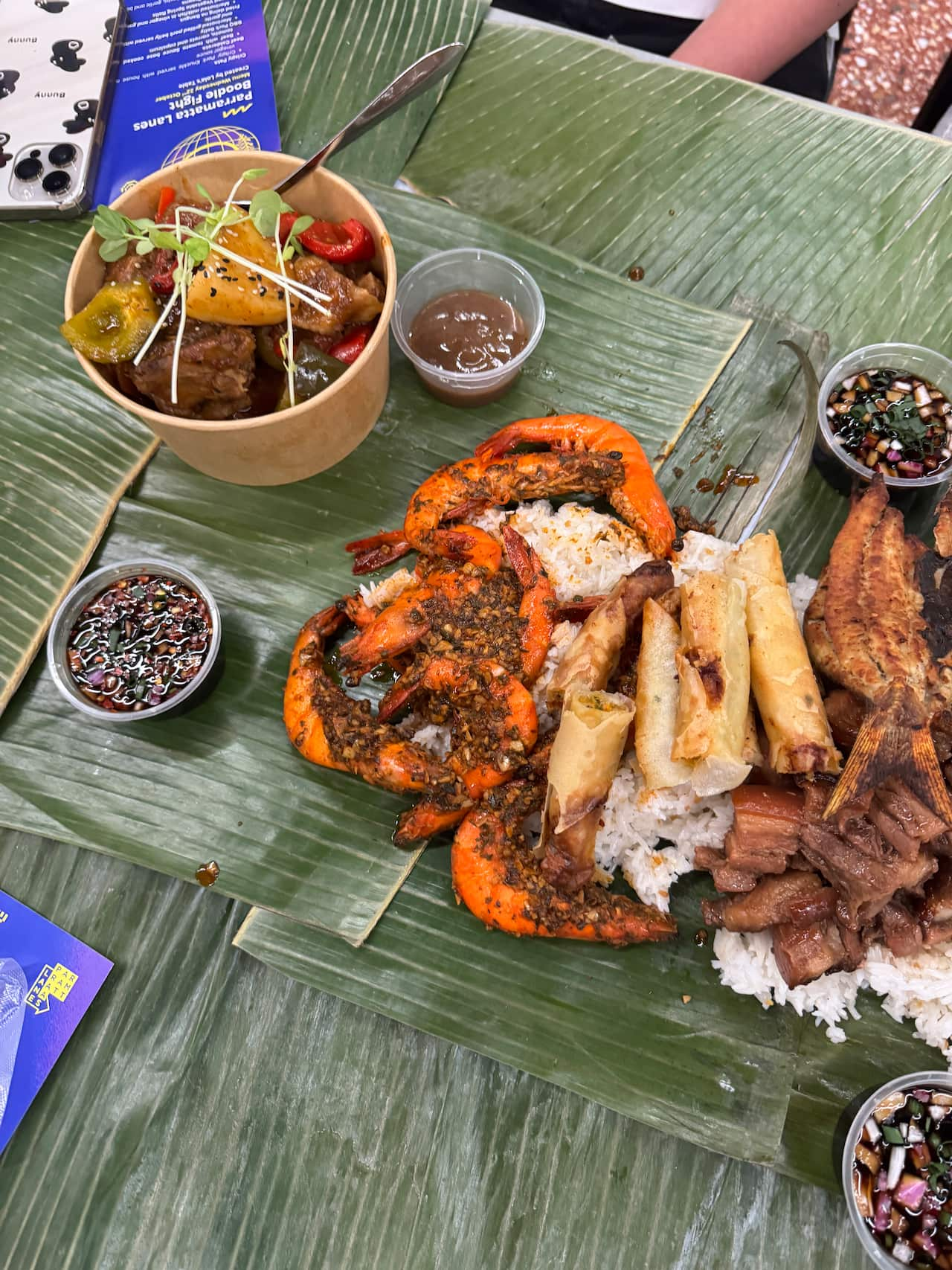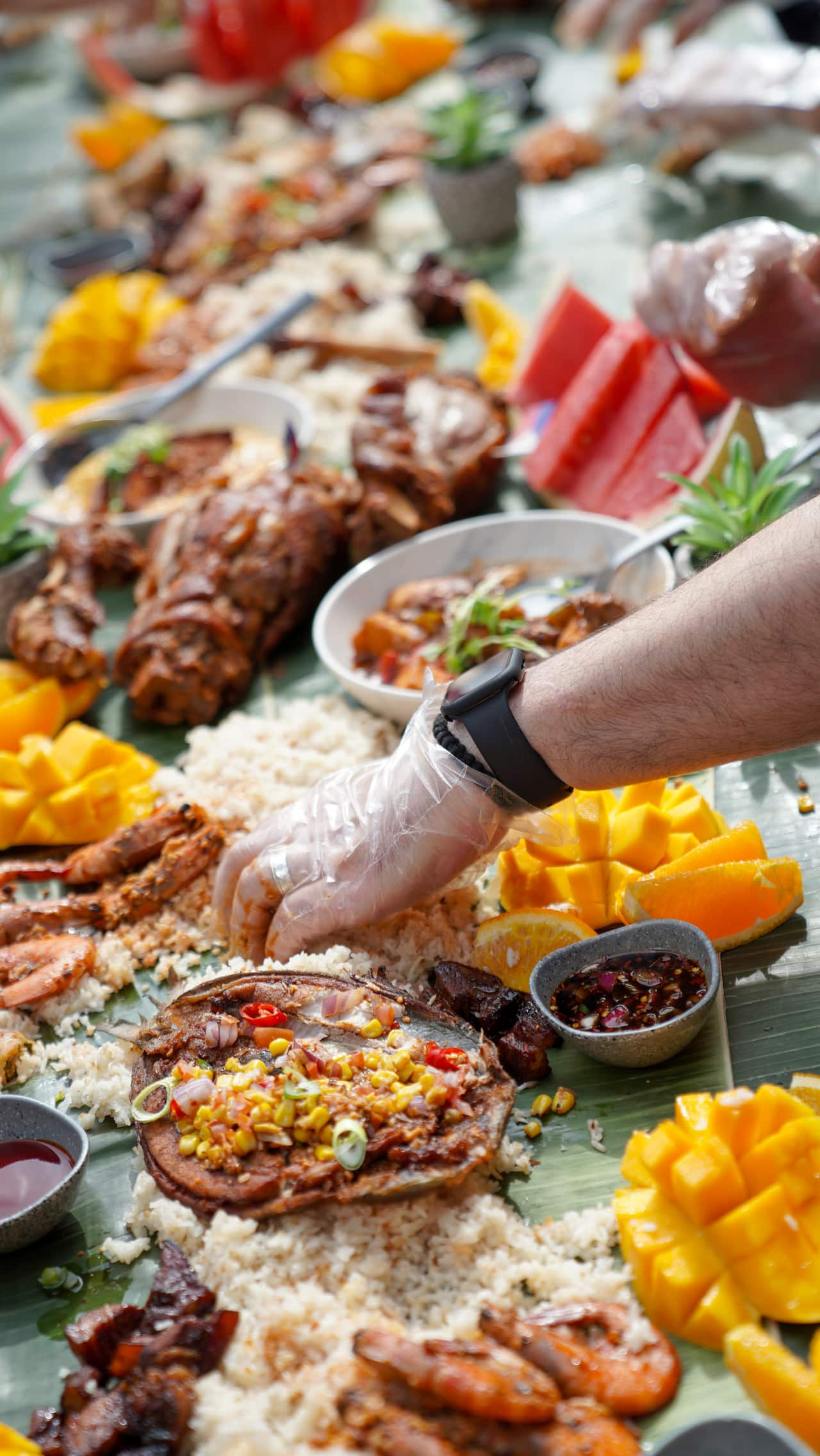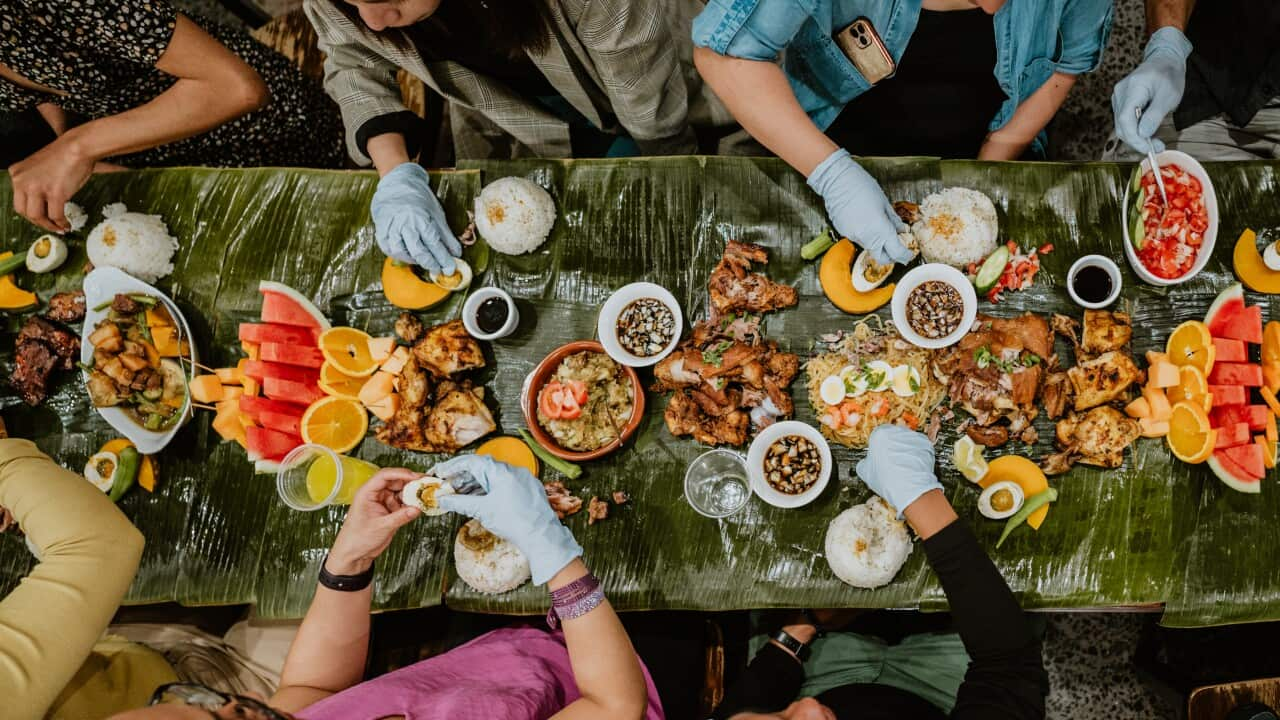One table. No plates. Just banana leaves, rice, and a wild, joyful mess. Welcome to a boodle fight.
What is a boodle fight?
This communal and highly Instagrammable eating practice originates from the Philippines. Sitting atop vibrant green and stream-washed banana leaves, a typical boodle fight spread consists of fresh white rice, grilled seafood, multiple ulams (savoury dishes like adobo and kare kare), side dishes (like pancit noodles or fried spring rolls) and condiments — namely garlic vinegar, bagoong (fermented shrimp paste) and red onions drenched in soy sauce (toyo).
Boodle fighters are encouraged to eat with their hands; fingers become your cutlery while your mouth takes the place of a plate. This eating experience cuts out the middle man entirely, transforming “farm to table” into “table to mouth”. This is all typically washed down with freshly squeezed calamansi juice.
The group meal is usually reserved for fiestas, like birthdays, farewells, weddings and funerals, but not strictly. Boodle fights can just be to simply feed the masses. Filipinos are party experts (duh, we go hard on the karaoke), and boodles are no exception.

Fingers become your cutlery in a boodle fight.
“The boodle fight came from the Philippine Military Academy. It’s when the soldiers take a break from training and they eat collectively, erasing the barriers,” Anna Manlulo, founder of Filipino Food Movement Australia, tells SBS Food. “No ranks, no social class, everyone just coming around together sharing food. It’s creating harmony and camaraderie."
What does “boodle fight” actually mean?
“Boodle” doesn’t sound Tagalog, and you’d be right in thinking so! Given the concept’s military roots, “boodle” was simply American slang for military contraband, namely sweets. It draws from the term “kit and caboodle”, “boodle” also being colloquial for bounty or prize.
Despite the name, no actual fighting is involved. The fight is purely in your own journey to create the most delicious hand/mouthful. Well, I’d hope so. I do recall many almost-punch-ons with my older brother over who gets the last longanisa sausage. Younger Filipino sibling privilege always prevailed. Sorry, bro.
While the term “boodle fight” is Filipino, the concept stretches across the Pacific Ocean. Many South East Asian and Pasifika countries have their own versions, given their similarly organic access to tropical leaves and fresh seafood. Eating with hands, of course, is shared by many different cultures, namely our South Asian siblings.
How to do a boodle fight at home
Step 1: Source some banana leaves (see below), enough to overlap onto a long dining table. Line a table with a plastic table cover, and start covering every surface with stretches of clean and slightly damp banana leaves.

Boodle Fight.
Step 2: Build mounds of hot steamy white rice (kanin). Feel free to do a full strip along the table’s length down the centre.
Step 3: Place all your ulams and savoury foods straight onto the kanin. For soups and wet dishes, either build a well with rice, or opt in a bowl and a serving spoon. Distribute these all evenly across the table! Divide your dishes into mini-servings so that everyone has equal access to everything. This part mitigates any actual fighting.
Some boodle curators like to incorporate tropical fruits to cut through the savoury, like chopped green mangoes, peeled bananas and watermelon slices.
Note: There’s no need to tackle any brand new Filipino recipes, unless you truly want to. Reach out to a nearby Filipino restaurant — they will likely have catering options. No one will blame you for outsourcing your dishes, us Filos are very forgiving. As long as the community spirit is there, we are happy.
Step 4: Pray over or bless the food. Spirituality pending, of course! Show your thanks for the meal in your own way. A toast or speech usually does the trick.
Step 5: Dig in.

Boodle fight
Once you’re done, you can pop any leftovers (if any!) in containers, give the leaves a healthy rinse, and repeat the process whenever you’d like! The leaves are usually good for 2 to 3 weeks when stored well.
Don’t over think it! It doesn’t have to be aesthetic by any means. There’s beauty in the mess and chaos, even. Your priority is full stomachs and deep post-meal exhales.
Where to get banana leaves
- Any good South East Asian grocer will have them frozen, as well as Pasifika stores! Check your local today.
- Do a recon of your neighbourhood. Many Aussie households grow them just randomly. Be sure to ask for permission before snipping any for yourself.
- Ask your local Filipino restaurateur where they source theirs from.
Where to boodle fight, for when the above feels like a lot
While the Blacktown LGA in Sydney houses one of the largest Filipino communities in Australia, you can find them across the country! Here are some local restaurants where you can book a boodle fight.
- Cucina de Manila, Rooty Hill NSW
- Pamana Filipino Restaurant, Chatswood NSW
- Lola's Table Filipino-Mexican Bistro, Wentworth Point NSW
- Pinoy Diner, Werribee VIC
- Adobo Co, Port Adelaide SA (mini trays served boodle style)
- Lazza, Marrickville NSW
- Bay Predo's Lechon Cebu, Warwick Farm NSW (shared platters served boodle style)
Share
SBS Food is a 24/7 foodie channel for all Australians, with a focus on simple, authentic and everyday food inspiration from cultures everywhere. NSW stream only. Read more about SBS Food
Have a story or comment? Contact Us

